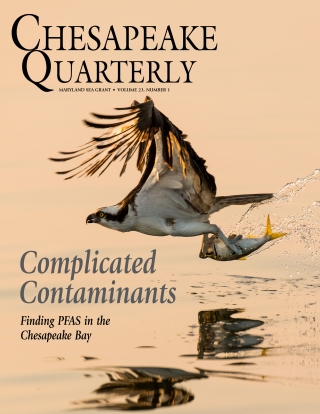Knauss legislative fellowships in Congress help build careers — and they're fun and educational. See our video and fact sheet for details.
Research Publications: UM-SG-RS-2014-23
Title:
Biochemical and morphological alteration of Listeria monocytogenes under environmental stress caused by chloramine-T and sodium hypochlorite.
Year:
2014Authors:
Gao, H; Liu, CCSource:
Food Control 46 : 455 - 461DOI:
10.1016/j.foodcont.2014.05.016Abstract:
Listeria monocytogenes is widespread in the environment and has been frequently isolated from food processing environments. This human pathogen can form a biofilm on food processing equipment or surface, which is difficult to eliminate by general cleaning and sanitizing procedures. In addition, improper sanitation control may allow bacteria to development resistance to disinfectants. This study investigated the possibility of L monocytogenes to develop resistance to chlorine-containing disinfectants. Nine strains of L monocytogenes with a variety of serotypes were used to study the minimum inhibitory concentration (MIC) of chloramine-T and sodium hypochlorite. The minimum inhibitory concentration (MIC) for all 9 strains of L monocytogenes was determined to be 256 ppm for chloramine-T and 512 ppm for sodium hypochlorite. All the strains were exposed to sublethal concentrations of chloramine-T and sodium hypochlorite by growing each strain in tryptic soy broth (TSB) containing chloramine-T or sodium hypochlorite at 37 degrees C for 20 h. The process included 10 cycles of growth in TSB containing chloramine-T or sodium hypochlorite at the concentration of 1/2 MIC followed by 10 cycles at 2/3 MIC and then 20 cycles at 3/4 MIC. Four of the 9 strains exhibited resistance to both disinfectants after repeated exposure to each disinfect at sub-inhibitory concentrations. Scanning and transmission electron microscopy examinations of the 4 chlorine-adapted strains revealed morphological changes of cells from short rod to coccoid and loss roughness on cells surface. In addition, higher activities (p < 0.05) of catalase and superoxide dismutase were observed in the chlorine-adapted strains than in their parent strains. This study found that certain strains of L. monocytogenes can become chlorine-adapted after repeated exposure to chlorine-containing disinfectants at sublethal levels. Effective sanitation control is critical to avoid the opportunity for L. monocytogenes to develop resistance to disinfectants.
Maryland Sea Grant Topic(s):
'Related Research Project(s)' link to details about research projects funded by Maryland Sea Grant that led to this publication. These details may include other impacts and accomplishments resulting from the research.
'Maryland Sea Grant Topic(s)' links to related pages on the Maryland Sea Grant website.






